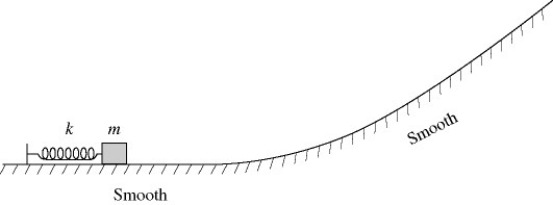Multiple Choice
A box of mass m is pressed against (but is not attached to) an ideal spring of force constant k and negligible mass,compressing the spring a distance x.After it is released,the box slides up a frictionless incline as shown in the figure and eventually stops.If we repeat this experiment with a box of mass 2m 
A) the lighter box will go twice as high up the incline as the heavier box.
B) just as it moves free of the spring,the lighter box will be moving twice as fast as the heavier box.
C) both boxes will have the same speed just as they move free of the spring.
D) both boxes will reach the same maximum height on the incline.
E) just as it moves free of the spring,the heavier box will have twice as much kinetic energy as the lighter box.
Correct Answer:

Verified
Correct Answer:
Verified
Q8: Two stones,one of mass m and the
Q31: An object is attached to a hanging
Q32: An object of mass 4.0 kg starts
Q33: A small hockey puck slides without friction
Q35: In the figure,a 5.00-kg block is moving
Q37: A force on an object is given
Q40: A block slides down a frictionless inclined
Q41: Consider the motion of a 1.00-kg particle
Q43: A car on a roller coaster starts
Q45: Block 1 and block 2 have the